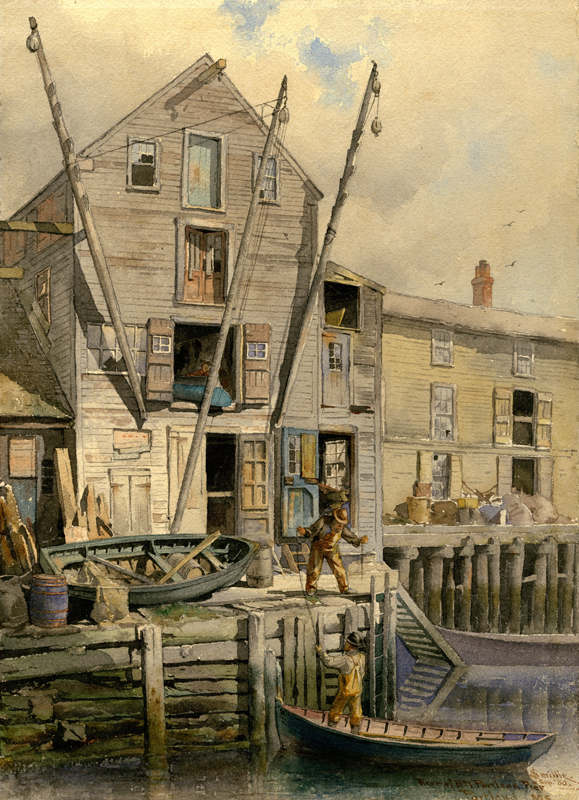
19th, 20th & 21st Century Fine Prints
707-546-7352 · fax 707-546-7924 · web: www.annexgalleries.com · email: artannex@aol.com
Rear of No. 1 Portland Pier Portland Maine by James David Smillie

Rear of No. 1 Portland Pier Portland Maine
James David Smillie
Rear of No. 1 Portland Pier Portland Maine
James David Smillie
1833 - 1909 (biography)James David Smillie often focused on everyday structures and people and the simplicity of country life when creating works for himself. An expert commercial engraver, he learned the art of a light hand and minute detail at an early age, creating his first copperplate engraving at age eight under the tutelage of his father, engraver James Smillie. This knowledge expanded to his watercolors, as well as the fine prints he created not for commercial use but simply for the enjoyment of the viewer.
One of a number of beautiful watercolors of Portland, Maine by American master James David Smillie. Done in 1880, the subject is the back of the No. 1 pier on the Fore River. Portland had burned in 1866 in an Independence Day celebration and had been rebuilt by 1880 with primarily a Victorian style. Despite this new grandeur Smillie turned to the wharf and two fishermen for his inspiration.
Smillie signed this in pigment in the lower right corner and title it: "Sep. 80 / Rear of No 1 Portland Pier / Portland Me."
This watercolor was on loan to M. H. de Young Memorial Museum in San Francisco for an exhbiition of the work of James David Smillie between October 1978 and March 1979. The loan number was L78.98.3.
James David Smillie was born in New York City on January 16, 1833, the eldest son of Katharine van Valkenburg and James S. Smillie. His father, a noted engraver, had a major influence on nineteenth-century American engraving and etching and is probably best known for his banknote engraving with Rawden, Wright, and Hatch, and for his engravings after Thomas Cole's painting series, Voyage of Life.
James D. studied at the Poughkeepsie Collegiate School and later at the University of New York. It has also been noted that he studied at the National Academy of Design in New York. Young James learned the art of engraving from his father and when he was eight years old produced his first etching on copper, a visiting card plate. In January 1846, he tried his first attempt at composition with a watercolor of the fall of Satan after Milton's poem, Paradise Lost. He was employed as a bank note engraver before he and his father started their own engraving business; they specialized in banknotes but also produced the engravings for the 1857 Mexican Boundary Survey Report.
Smillie headed the watercolor committee for the Centennial International Exhibition of 1876. Held in Philadelphia, it was the first official World's Fair held in the United States and was a celebration of America's hundredth anniversary of independence. Smillie was elevated to full Academician in the National Academy of Design in 1876. As early as 1870, he attempted to interest fellow etchers in forming an etching club in New York but had no luck. In 1877, he co-founded the New York Etching Club and the first meeting was held in his studio. In 1881, he was elected as one of the "original fellows" of the London Society of Painter-Etchers.


